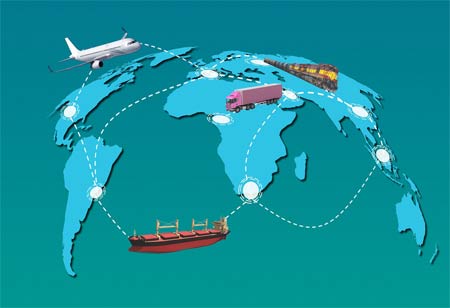THANK YOU FOR SUBSCRIBING
THANK YOU FOR SUBSCRIBING

By
Logistics Transportation Review | Thursday, August 08, 2024
Stay ahead of the industry with exclusive feature stories on the top companies, expert insights and the latest news delivered straight to your inbox. Subscribe today.
In the fast-paced world of logistics, staying ahead means embracing technology for seamless operations.
Fremont, CA: Businesses are adopting two notable strategies to improve efficiency in their supply chains: the integration of third-party logistics (3PL) providers via Electronic Data Interchange (EDI) and Application Programming Interface (API) systems. This transition towards enhanced automation in logistics is transforming the dynamics of collaboration with 3PL partners, resulting in considerable advancements in operational efficiency and communication.
EDI Integration: Transforming 3PL Communications
The integration of EDI with 3PL services marks a significant advancement in the automation of data exchange between businesses and their logistics partners. This system relies on the transmission of electronic messages, facilitating a smoother and more efficient operation. By using batch processing for communication, files are transmitted collectively at predetermined times, enhancing the speed and reliability of transactions. This approach not only accelerates processing times by enabling real-time request and response dynamics but also reduces the need for manual data entry, cutting down on human errors.
API Integration: The Real-Time Communication Avenue
On the other side, API integration offers a more dynamic interaction between a company’s and a 3PL’s systems. Unlike EDI, API bypasses batch processing for a real-time data transmission approach. This immediacy in communication ensures that updates and transactions are processed instantaneously, providing end-to-end visibility. It's a step forward in ensuring that logistics operations are more transparent and responsive.Despite its advantages, API integration comes with its own set of challenges, such as a lack of standardization, requiring custom setups for each 3PL provider, and the complexity of establishing multiple integrations for businesses dealing with several 3PLs.
Deciphering 3PL Transaction Codes
A crucial aspect of 3PL integration involves the use of specific transaction codes to facilitate various logistics operations. These codes, essential for efficient data exchange, cover a wide range of activities from shipment requests to warehouse shipping orders, and from transportation status updates to invoicing. The right understanding and usage of these codes can significantly enhance the effectiveness of 3PL communication.
The Single 3PL Advantage
While diversifying 3PL partners can seem advantageous in shopping for rates, the benefits of an integrated partnership with a single 3PL are becoming increasingly apparent. Such partnerships translate into more cohesive collaboration, lighter data management workloads due to less integration, opportunities for freight consolidation resulting in cost and pollution reduction, and lower risks of damage and loss thanks to prioritized service.
Best Practices for Flawless 3PL Integration
Successful integration with 3PLs mandates a strategic approach, starting with a clear comprehension of the integration's objectives. Aligning these goals with business needs and employing standardized data formats are paramount for a smooth transition. Industry-standard EDI formats, for example, ensure compatibility and minimize data exchange errors, setting the stage for a more efficient and error-free operation.
I agree We use cookies on this website to enhance your user experience. By clicking any link on this page you are giving your consent for us to set cookies. More info





